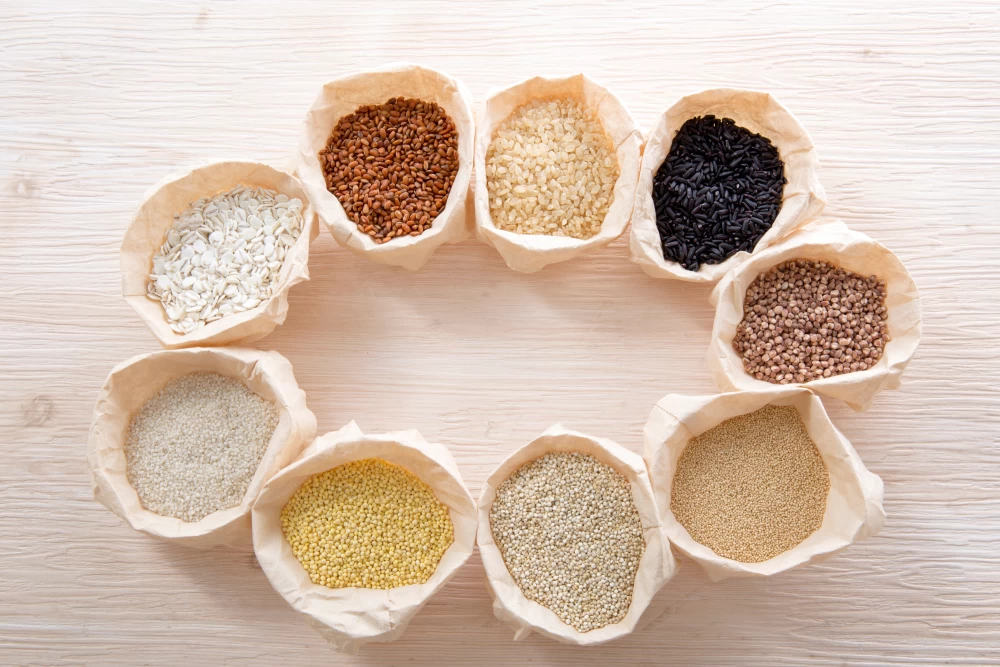
- 15th February 2024
Table of Contents
Diet plays a critical role in the complex balancing act of diabetes management. In all the choices, one food group—millet—stands out as having the ability to help with blood sugar control. Traditional diets have relied on these tiny, nutrient-dense grains for generations because of the many advantages they provide to health. Join me as I discuss five millets that may be helpful companions on the road to stable blood sugar.
1. Finger Millet (Ragi)
Ragi, a nutrient-dense superfood, is front and centre in the battle against diabetes. It aids digestion and keeps blood sugar levels stable because of the high fibre content. Ragi is a great source of magnesium, an essential mineral for insulin response, and it also has essential amino acids. Ragi porridge is a great way to start the day, and ragi flour can be used to make diabetic-friendly variations in baking. Nutritional information for 100 grams of raw ragi:
2. Foxtail millet (kangni)
In terms of blood sugar management, foxtail millet (also known as kangni) is a great option due to its low glycemic index. Foxtail millet's slow-release carbs help keep energy levels steady without triggering dangerous blood sugar swings. If you want to improve your glycemic control, try using foxtail millet instead of refined grains in dishes like upma, khichdi, or even rice. This is the nutritional breakdown of 100 grams of raw Foxtail Millet:
3. Bajra (Pearl millet)

It is a grain that has recently gained popularity as a diabetic-friendly option because of its high fiber content. Bajra is a mainstay in many Indian households. Pearl millet's soluble fiber helps keep blood sugar levels steady by reducing the rate of glucose absorption. One healthy substitute for regular wheat roti is the popular unleavened flatbread known as bajra roti. A diabetic-friendly diet would be remiss without its versatile and nutty flavor. Raw 100 grams of Pearl Millet (Bajra) contains the following nutrients:
4. Little Millet (Kutki)
Little millet lives up to its moniker, being both petite and nutrient dense. It aids in blood sugar regulation thanks to its low carbohydrate content and high fiber content. In addition to its many health advantages, little millet is an excellent source of B vitamins. For a diabetic-friendly twist on classic Indian dishes like pulao and upma, try substituting a small amount of millet for rice or semolina. Calorie breakdown of 100 g of uncooked little millet (kutki):
5. Barnyard Millet (Jhangora)
The underappreciated barnyard millet should be a part of the diabetic-friendly diet. Improved insulin sensitivity is a result of its high fiber and resistant starch content. Barnyard millet also contains important micronutrients like zinc and iron, which are great for your health in general. Feel the difference in your ability to manage your blood sugar levels when you incorporate barnyard millet into your diet through recipes like khichdi or by substituting it for rice. One hundred grams of raw Barnyard Millet (Jhangora) contains the following nutrients:
Managing your diabetes with millets is about more than just lowering blood sugar levels; it's about improving your health in general. With their abundance of nutrients, these ancient grains provide more than just glycemic control; they offer a more comprehensive strategy for health.
It is essential to keep a balanced approach to managing diabetes as you begin this journey with millets as your companions. The benefits of millets in achieving and maintaining stable blood sugar levels are enhanced by regular physical activity, portion control, and mindful eating.
Finally, the nutrient density and adaptability of millets make them a powerful tool in the fight against diabetes. The many millet varieties each have their own set of advantages, such as the fiber-packed ragi and the slow-release energy of foxtail millet. Incorporate these grains into your diet with gusto, try out a variety of recipes, and see how they improve your quest for blood sugar control. Indulge in the delicious flavors of millets while you nourish your body with a combination of ancient wisdom and modern nutritional insights. It's a perfect balance that promotes your overall health.
